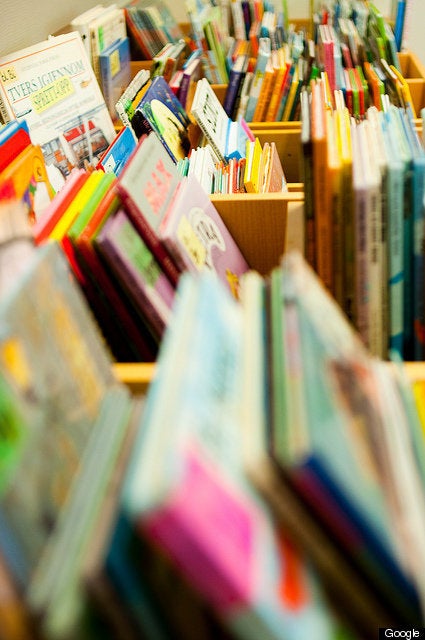
The big story on The New York Times today is that parents are again urging children to ditch children's books. Sure, Where the Wild Things Are and Green Eggs and Ham may be beloved by generations of kids, but many parents are concerned that colorful pictures and imaginative stories aren't going to give their 5-year-old a leg-up on their SATs. According to the Times:
Parents have begun pressing their kindergartners and first graders to leave the picture book behind and move on to more text-heavy chapter books. Publishers cite pressures from parents who are mindful of increasingly rigorous standardized testing in schools.
Both picture books and "big kids" books are great in their own ways (though as somebody whose first name comes from a picture book, I may be a bit biased). But beyond pros and cons, what's also interesting is that this recent push is not actually recent at all. Attempts to get kids reading books that are good for them, rather than what they want to read, go back centuries, and this is only the latest instance of adults trying to take the fun out of children's books.
Going way back to ancient Greece and Rome, "children's books" did not really exist at all. Boys attended schools where they were expected to memorize and recite passages from poems and plays (girls, lucky them, would occasionally learn to read and write at home when they were not cooking, cleaning or mending). Teachers would dictate sections of The Iliad or Aeneid to students to copy into notebooks (books were much too expensive for each child to have). As they got older, children would read these works out themselves. Always the goal was to educate and edify, not to entertain.
Up through the 17th century, children's literature in England was dominated by Puritans working to cultivate the young into moral beings. Books like John Bunyan's Pilgrim's Progress (1678), and James Janeway's Token for Children (1671) were really written for adults, but kids ended up reading them too, for lack of better options. For these kids, reading was just an extension of Bible study.
This started to really change in the 18th century, thanks to bookseller John Newbery, who began publishing illustrated books meant specifically for young readers. The first of these, A Little Pretty Pocket-Book (1744), is considered the first children's book in England and opened the floodgates to fun in kids' books.
Grimm's Fairy Tales (1823), James Orchard Halliwell's nursery rhymes and Hans Christian Andersen's Fairy Tales (translated to English 1846) soon followed, finding immense popularity chiefly for their entertainment value. While the outlandish and often violent plots of these books could turn some parents and instructors off, their emphasis on providing a moral lesson made them more palatable for adults worried that their kids weren't learning enough through their reading lessons.
This outlook ran into trouble with books like William Thackeray's The Rose and the Ring (1855) and Charles Kingsley's The Water Babies (1863), which focused first on fantastical descriptions and characters, and secondarily on offering a lesson. Edward Lear's Book of Nonsense (1846), gave up on meanings or morals altogether. Plenty of adults hated it, but kids loved being able to make up their own definitions of phony words. The pinnacle of these surrealistic kids books came with Lewis Carroll's Alice's Adventures in Wonderland (1865).
Through the early 20th century, children's literature continued to diversify and began to break down the resistance from adults, with writers like A.A. Milne, J.M. Barrie and L. Frank Baum (initials were all the rage at this time) creating entire franchises around their memorable characters, including book series, stage plays and merchandise that were often as popular with parents as their children. More recently, authors like Philip Pullman, J.K. Rowling and Stephanie Meyer have commanded the bestseller lists, with adults as likely as children to pick up their latest books (or watch the latest film based on them).
In a sign of the growing clout of children's books, in 2001, The New York Times went so far as to create a "Children's Books" bestseller list because the first three Harry Potter books had monopolized the top positions of the adult list for over a year. After centuries of kids having to read like grownups, adults are now choosing to read like kids.
But while these kids books are finally being taken seriously by adults, the Times story shows that they may now be taking them too seriously, again expecting that the books their kids read offer self-improvement first, and entertainment...maybe not at all. The latest challenge to picture books looks like another case of well-intentioned adults ruining the fun of children's books.